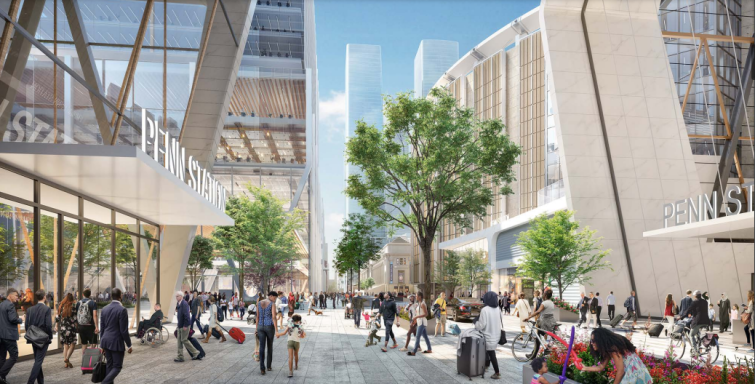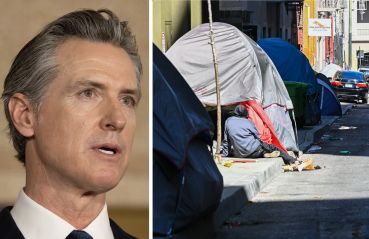Elected Officials Blast Albany’s ‘Worst’ Economic Development Deals
Michael Gianaris and other state officials out Penn Station and Hudson Yards as projects that benefitted developers more than everyday New Yorkers.
By Mark Hallum March 28, 2022 9:00 am
reprints
A group of state lawmakers released a report March 22 detailing what they describe as the worst economic development deals across New York over the past decade. Some of the report’s targets, naturally, disagree.
The report, titled “The Dirtiest Dozen: New York’s Worst Economic Development Deals,” claims that the city and the state committed $10 billion annually for projects with little to no public transparency, including affordable housing that is far from affordable and tax credits that allegedly only trickle down into the pockets power players.
“The way we have been doing economic development, say for at least the past decade, has just been abysmally disappointing,” State Senate Majority Leader Michael Gianaris, a Queens Democrat, said during a press conference. “It’s a lot of state subsidy, a lot of state benefits that have flowed to projects that ended up not delivering the hope for job creation and end up being just a windfall for entities that don’t really need it.”
The majority of projects were outside New York City, from the billion-dollar revival plan for Buffalo to the $15 million Central New York Film Hub outside of Syracuse. But a number of them, such as the Penn Station redevelopment plan — formerly known as the Empire Station Complex — or the 421a program, which critics say could allegedly remove $1.7 billion in tax revenue from the state in fiscal year 2021 alone, made the cut, per the report.
The biggest problems, lawmakers contend, is that many of these deals were done “under a cloak of darkness” so the public can’t “raise objections to these things as they come,” Gianaris said.
As the biggest stakeholder in the Penn Station redevelopment, Vornado Realty Trust has been at the forefront of the controversy. The long-term Penn Station plans call for replacing historic buildings, such as the Hotel Pennsylvania, with office towers to fund the multibillion-dollar renovation of the transit hub.
“The Penn Station project isn’t a giveaway to developers — it’s a reimagining of the busiest commuter hub in the nation to streamline the inefficient systems that have long caused chronic congestion and delays,” Carlo Scissura, CEO of the New York Building Congress, said in defense of Vornado in a statement. “New York City needs a 21st-century rail hub designed to carry our 600,000 daily commuters that can also handle the increased capacity needed for the Gateway Program. What’s more, this public-private partnership would revitalize Midtown and grow the economy by creating hundreds of thousands of jobs.”
Critics contend there are scant details about the plan and how much taxpayers will foot the bill for it, said State Sen. Brad Hoylman, a long-standing opponent to the office aspect of the proposal.
“We’re talking 18 million square feet of new commercial office space — that’s larger than Hudson Yards,” Hoylman said in the press conference. “So far we have no transparency, few details, very little in the way of planning. We should not move forward on the Penn Station redevelopment without clarity from the [Metropolitan Transportation Authority] or [Empire State Development] about the details of this plan, how much is it going to cost taxpayers if the commercial development does not come to pass and when can we expect to see a new Penn Station?”
The MTA has only just begun some of the work on Penn Station, such as elevating ceilings and building new entrances, with Chair Janno Lieber asserting earlier in March to reporters that old office stock needed replacement and transit improvements needed funding through the development agreement with the private sector. Lieber was formerly a Silverstein Properties executive who spearheaded much of the redevelopment of the World Trade Center site.
Contrary to what some alleged in the press conference, an ESD official clarified that there would be no redevelopment of Madison Square Garden, which sits atop Penn Station, and that there are no cost overruns at this time in the project. They further stated that they had sought a deal that would be fair to taxpayers in the development agreement.
“Governor Hochul has proposed a commuter-first vision for long-neglected Penn Station, which will vastly improve the experience for hundreds of thousands of New Yorkers who travel through Penn Station every day, while enhancing the surrounding neighborhood with revitalized public spaces, streetscapes, better transit access and additional social services,” ESD said in a statement.
Vornado wasn’t the only developer in the cross-hairs of the electeds’ report. Related Companies’ massive Hudson Yards project was called after a study from the Schwartz Center for Economic Policy Analysis showed its development had allegedly usurped $1.1 billion in city and state subsidies.
Hochul’s new plan for the 421a tax break, which allows developers to pay no taxes for up to 35 years on residential developments that incorporate some affordable housing, also came under scrutiny in the report. Called the “Affordable Neighborhoods for New Yorkers” program, Hochul’s revamped 421 program would create a new tax code, 485w, that slightly increases the affordability levels to get the tax break while decreasing the percentage of affordable units required in a development.
State Sen. Liz Krueger, who represents the east side of Manhattan, advocated for transparency on how developers are taxed and whether they actually deliver on the required affordable housing.
“[The public doesn’t] even know how much is going out in economic deals in the state of New York because so much of it is done through our tax process,” Krueger said. “I was looking into one 421a building the other day, they had a 421a 80-20 deal and low-income housing tax credits. … In theory, they triple-dipped to build affordable housing in my district, and the units are renting for $5,000 [per month] on a studio [and] $10,0000 for a two-bedroom. You tell me in what world that’s affordable housing?”
The state’s Division of Homes and Community Renewal (HCR) came to the defense of Hochul’s proposal to keep tax incentives, stating that the new program provides deeper affordability for new projects that will primarily help outer borough residents.
“The Affordable Neighborhoods for New Yorkers tax incentive differs from the previous program by requiring permanency of the affordable units for the first time, serving lower-income households across the city, and ensuring greater efficiency of taxpayer dollars,” an HCR spokesperson said in a statement.
Mark Hallum can be reached at mhallum@commercialobserver.com.


